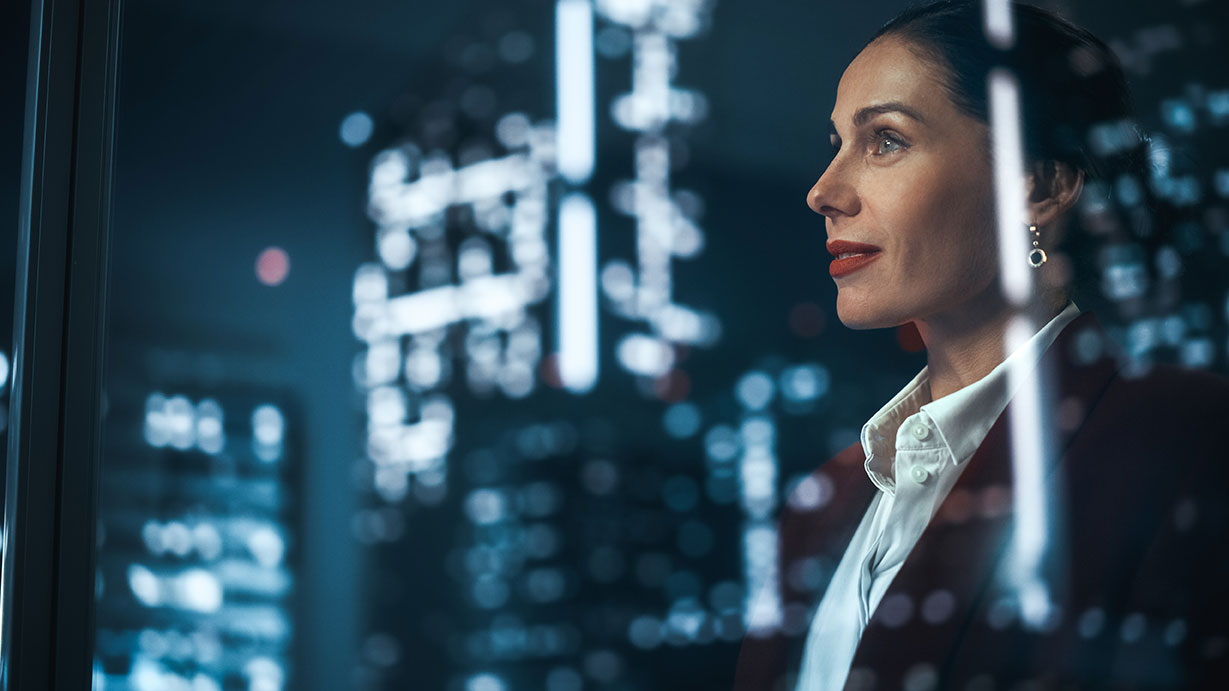The technological revolution of 2025 isn’t proceeding at a steady pace – it’s accelerating exponentially. As innovations switch across industries, IT professionals face a transformed landscape that extends far beyond new tools and platforms. The traditional IT role has become dynamic and fluid, requiring practitioners to embrace an unending cycle of learning and adaptation to stay relevant. We are talking about some of the top trending technology and its real life use cases.
Hyperautomation
Hyperautomation is a business-driven, disciplined approach that organizations use to rapidly identify, vet and automate as many business and IT processes as possible. Hyperautomation involves the orchestrated use of multiple technologies, tools or platforms, including: artificial intelligence (AI), machine learning, event-driven software architecture, robotic process automation (RPA), business process management (BPM) and intelligent business process management suites (iBPMS), integration platform as a service (iPaaS), low-code/no-code tools, packaged software, and other types of decision, process and task automation tools.
Source: Gartner
Real life use cases-
- Proactive Customer Service: Organizations are using hyperautomation to predict customer needs and automating preventive actions before issues arise.
- Personalized Customer Experience: Combining data analytics, AI, and automated marketing tools to deliver custom experiences across channels.
- Patient Journey Optimization: Automating everything from appointment scheduling to follow-up care, reducing administrative burden and improving patient experience
Artificial Intelligence
Artificial Intelligence (AI), the ability of a digital computer or computer-controlled robot to perform tasks commonly associated with intelligent beings. The term is frequently applied to the project of developing systems endowed with the intellectual processes characteristic of humans, such as the ability to reason, discover meaning, generalize, or learn from past experience.
Source: Britannica
Practical scenarios-
- Fraud Detection: Real-time monitoring of transactions to identify unusual patterns and prevent fraudulent activity
- Intelligent Chatbots: Conversational AI handling customer inquiries across multiple channels
- Traffic Management: Smart systems that analyze traffic patterns and adjust signals in real-time to reduce congestion
- Disease Diagnosis: AI analyzes medical images to detect cancers, diabetic retinopathy, and other conditions with accuracy rivaling specialists
Machine Learning (ML)
Machine learning (ML) is a subset of artificial intelligence (AI) that uses mathematical algorithms and data to imitate the way humans learn from experience. The objective of machine learning is to make informed decisions or predictions based on past interactions with similar types of data. The goal of machine learning is to make better predictions or decisions as more data becomes available.
Source: Techopedia
Real world scenarios-
- Supply Chain Optimization: Machine Learning models that forecast disruptions and automatically adjust production schedules
- Campaign Optimization: Machine Learning algorithms that automatically adjust marketing spend across channels to maximize ROI
Natural Language Processing (NLP)
NLP (Natural Language Processing) is a technology that allows for the conversion of text or spoken audio into structured, encoded information, relying on an appropriate ontology to interpret the meaning within the language; essentially, it’s the ability for computers to understand and process human language.
Source: Gartner
Day to day examples-
- Resume Screening: Tools analyzing job applications to identify qualified candidates
- Employee Feedback Analysis: NLP processing surveys and reviews to identify workplace trends
- Litigation Analytics: Predicting case outcomes based on historical judge decisions and case characteristics
Internet of Things
The Internet of Things (IoT) is the network of physical objects that contain embedded technology to communicate and sense or interact with their internal states or the external environment.
Source: Gartner
Augmented reality
Augmented reality (AR) is the real-time integration of digital information like text, graphics, and audio, overlaid onto real-world objects, essentially enhancing a user’s perception of their surroundings by blending virtual elements with the physical world; differentiating itself from virtual reality by its focus on the “real world” element and interaction with it.
Source: Gartner
Organizations have been using AR as an extension of the brand experience to engage customers in immersive environments and drive revenue.
Real life use cases-
- Virtual Try-On: Allows customers to visualize how clothing, eyewear, makeup, or furniture would look in their homes or on themselves
- Construction Monitoring: Comparing actual progress against digital plans in real time
Generative AI
Generative AI refers to AI techniques that learn a representation of artifacts from data, and use it to generate brand-new, unique artifacts that resemble but don’t repeat the original data. These artifacts can serve benign or nefarious purposes. Generative AI can produce totally novel content (including text, images, video, audio, structures), computer code, synthetic data, workflows and models of physical objects. Generative AI also can be used in art, drug discovery or material design.
Source: Gartner
Practical examples-
- Marketing Copy: Generative AI is used for generating tailored product descriptions, ad copy, and social media posts at scale.
- Medical Report Summarization: Generative AI can also be used to condense lengthy patient histories into actionable summaries. In turn, saving a lot of time for the doctors.
Conclusion
As we navigate through 2025’s technological landscape, the convergence of hyperautomation, artificial intelligence, machine learning, NLP, IoT, augmented reality, and generative AI is fundamentally reshaping how businesses operate and deliver value. These technologies aren’t simply individual tools but interconnected capabilities that, when strategically implemented, create exponential opportunities for innovation. Organizations that embrace this technological evolution will find themselves able to predict customer needs, personalize experiences, optimize operations, and solve complex problems with unprecedented efficiency. The future belongs not to those who simply adopt these technologies, but to those who thoughtfully integrate them into their business strategies, continuously learn, and adapt to the ever-accelerating pace of digital transformation.

